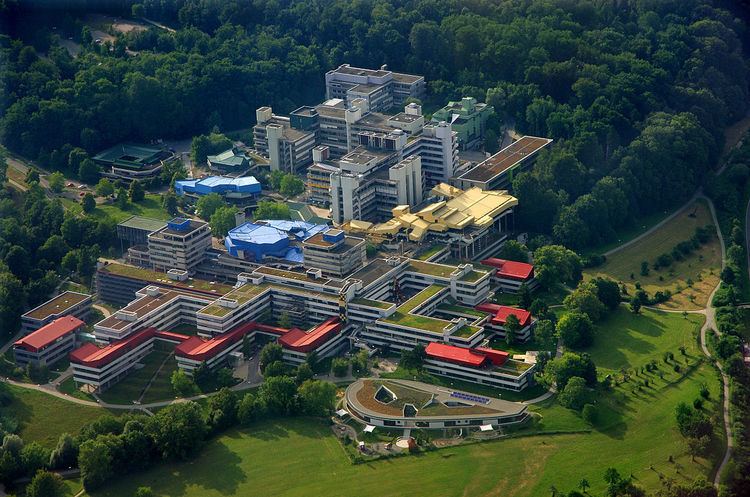Academic staff 1,251 January 2016 Students 11,706 WS 2016/17 Phone +49 7531 880 Founded 1966 | Established 1966 Administrative staff 984 January 2016 Undergraduate tuition and fees 1,000 EUR (2011) Total enrollment 11,661 (2015) Rector Ulrich Rüdiger | |
 | ||
Notable alumni Zoran Đinđić, Axel A Weber, Asha‑Rose Migiro, Schön scandal, Hans Ulrich Gumbrecht Similar University of Tübingen, Albert Ludwigs University, Heidelberg University, Konstanz University of Applie, University of Mannheim Profiles | ||
The university of konstanz in two minutes
The University of Konstanz (German: Universität Konstanz) is a university in the city of Konstanz in Baden-Württemberg, Germany. It was founded in 1966, and the main campus on the Gießberg was opened in 1972. The University is situated on the shore of Lake Constance just four kilometers from the Swiss border. As one of eleven German Excellence Universities, University of Konstanz is consistently ranked among the global top 250 by the Times Higher Education World University Rankings . In 2016 it was ranked 7th globally by the Times Higher Education 150 under 50 rankings. It is often referred to as "small Harvard" by the German media.
Contents
- The university of konstanz in two minutes
- History
- Campus
- Organization
- Rankings
- Notable Alumni
- Points of interest
- References
Over 10,000 students from close to 100 countries are enrolled at the university, while over 220 links to European partner universities and numerous exchange programmes facilitate global networking. Students may choose from more than 100 degree programs. Moreover, Konstanz University cooperates with a large number of renowned universities such as Johns Hopkins University, Yale University, the University of Chicago, UC Berkeley and the University of Zurich. Its library is open 24 hours a day and has more than two million books.
History
In 1965 the founding committee of the university developed the concept of a reform university with new forms of study and teaching, a central administration and central facilities for technology, computers and language training. New forms of self-administration replaced traditional university structures. In 1966 the university began its work in a wing of today's Inselhotel, formerly a Dominican monastery. Professor David Daube, Regius Professor of Civil Law at the University of Oxford, gave the inaugural lectures.
The beginning was makeshift - in the middle of Sonnenbühl on the edge of the town quarter Petershausen on the right side of the Rhine, with only a handful of professors and a few dozen students. Starting in 1967, today's campus was developed through individual construction projects on the hill known as the Gießberg. Until today, the university has continued to be structurally altered and expanded. In 2007 the University joined the German Universities Excellence Initiative competition and succeeded in becoming Germany's smallest and youngest University of Excellence. The University secured funding for its institutional strategy "Towards a Culture of Creativity", the graduate school "Chemical Biology" as well as the cluster of excellence "Cultural Foundations of Integration". This result was reconfirmed when the university succeeded in the second programme phase (2012–2017) with all projects and additionally was granted the "Graduate School of Decision Sciences".
Campus
The campus is located on the Gießberg, about 3 kilometres (1.9 mi) from the center of the city and comes with its own beach facing the Lake Constance.
The university was planned as a place of life and learning, in which new forms of research and teaching should be reflected in the architectural style. Dense construction, short paths, the absence of large auditoriums in exchange for a large number of seminar rooms, as well as the variety of work, traffic, and quiet areas, are all part of the architectural concept. In addition, there was the idea of creating lasting "Kunst am Bau" (structural art) accents, so that the building of a desolate concrete landscape could be avoided in an effective manner.
Organization
These are the 3 faculties into which the university is divided:
Rankings
The ranking results of various commonly referenced international rankings are shown below.
In the "Times Higher Education 150 Under 50 University Rankings", the University of Konstanz achieved 7th position globally in 2016. This position makes Konstanz the best German university amongst those assessed, all of which are under 50 years old. This assessment was underscored by the 2014 edition of the global ranking "QS Top 50 under 50", which also concentrates on universities under the age of 50. In this case Konstanz came 21st in the global comparison.
